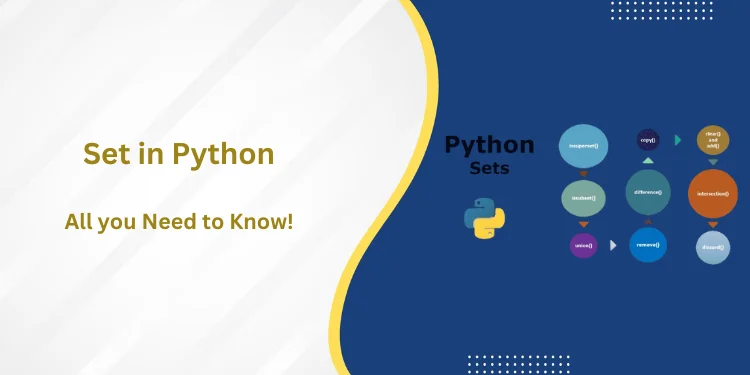Table of Contents
ToggleIntroduction:
Are you looking to learn more about the Longest Consecutive Subsequence (LCS) problem? If so, then this introduction is the perfect place to start. In this blog section, we’ll cover the LCS problem including an overview of the approach and technique used to solve it.
We’ll also take a look at two approaches to solving the Longest consecutive sequence : through hashing and through a priority queue. Finally, we’ll touch on time complexity and memory optimization so that you can get the most out of your solution.
Let’s begin with an overview of what LCS is all about. The LCS problem refers to finding the longest consecutive subsequence within a given sequence of integer elements.
To better understand this concept, let’s take a look at an example. For instance, given a sequence of 10 elements (1, 2, 3, 7, 8 , 9, 4, 5 , 6) the longest consecutive subsequence would be 3456 (a total of 4 elements).
Now that we know what LCS is all about, let’s dive into the technique used to solve it. The first approach we will discuss is through a naïve way of solving this problem; This approach involves looping through each element in an array one by one in order to determine its presence in another array for each element in order to find out its consecutive nature.
Though this approach can be relatively effective on smaller datasets it is not suitable for large datasets as it has an O(n2) time complexity and can lead to significant computational cost when scaled up.
Naïve Approach to Longest Consecutive Subsequence

Longest consecutive subsequence is one of the most common sequence problems that appear in computer programming. It involves finding the longest sequence of numbers or characters in a given set.
In this blog post, we will examine the naïve approach to solving this problem, and look at two different variations of this approach: hashing, and priority queue. We’ll also analyze how these approaches compare in terms of complexity, and how to optimize them for better performance.
Naïve Approach Longest consecutive sequence
The naïve approach to finding longest consecutive sequence involves iterating through an array and tracking each element encountered as it appears consecutively in the array.
This allows us to measure the length of a given sequence without having to compare elements against each other or perform any costly calculations. However, this approach can be inefficient if the size of the array is large or if there are many sequences to take into consideration.
longest Consecutive Subsequence using Hashing
We can improve upon the naïve approach by using a data structure known as a hash table. A hash table stores elements in key value pairs, where each element is assigned an identifier based on its value; so when we loop through our array, we can look up each element’s identifier in our hash table and thereby determine whether it is part of a larger sequence or not.
This achieves faster lookup times than looping through every element in our array, allowing us to quickly identify longest consecutive sequences and their lengths with ease.
Longest Consecutive Subsequence using Hashing

Have you ever wanted to know the longest consecutive sequence in an array? Maybe you’re dealing with a lengthy list of numbers, or tracking certain values over time. Either way, understanding the longest consecutive subsequence can be essential to solving a wide variety of problems.
In today’s blog we’ll cover the basics of this problem and explain two approaches that can help you solve it – hashing and priority queues.
What is the longest consecutive sequence
The longest consecutive subsequence (LCS) is defined as the sequence of elements which are not necessarily adjacent in an array but are in order from least to greatest.
For example, if given an array [1, 3, 4, 5], the LCS would be [3, 4, 5] since it satisfies the definition of being ordered from least to greatest. The task at hand is to determine the length of this LCS without knowing beforehand what elements will be present in it.
Longest Consecutive Subsequence using Priority Queue

Longest consecutive sequence is a sequence of integers that appear in order but can have gaps between them. The classic example of this is the list 1, 2, 4, 6; where 3 is missing from the list and is considered the gap. Finding the longest consecutive subsequence from a given set of numbers has been an important problem in computer science for many years.
Finding the longest consecutive sequence from a given set of numbers can be done with a number of different approaches. A naïve approach is simply to iterate through each number and compare it to every other number and select the longest sequence. However, this technique is not time efficient and has a complexity of O(n2).
The use of Hashing provides an alternate solution with a more optimized time complexity of O(n) by preprocessing the array into a hash table caching values in key value pairs and then finding all consequent elements in linear time without needing to compare each element against every other element.
Using Priority Queue provides another way to solve this problem efficiently with a time complexity that’s even faster than using hashing, at O(nlogn), where m is equal to the length of the longest consecutive sequence found.
Here we assume there’s some natural ordering in our dataset (e.g. if we assume it’s sorted). Then all we have to do is build a priority queue from the start element (i+1) onwards and subsequently pop out all consecutive elements one by one until we reach the end element (i+m).
Comparison of Different Approaches with Longest Consecutive Sequence
Longest Consecutive Subsequence finds the length of the longest consecutive sequence consisting of natural numbers in a given array. Different approaches to solve this problem include naïve approach, hashing solution, and priority queue approach.
This blog post will introduce and compare each approach to help you better understand how to obtain the longest consecutive subsequence from an array of numbers.
To begin, let’s introduce the naïve approach which involves iterating through each element in the array and using nested loops to find consecutive integers that follow it.
If any consecutive integers are found, we can keep track of the length of this subsequence and update our result accordingly if that length is larger than our current maximum. Although this method is simple to understand, it is not efficient as its time complexity is O(n^2).
The hashing solution involves first creating a hash table with all elements in the array as keys and their respective indices as values. Then we iterate through each key in the hash table and check if its left and right neighboring elements exist by looking up their indices in the hash table.
If they exist, we can increment our count by one and go to look up their respective left or right neighbors until there are no more left or right neighbors. This method is faster compared to a naïve approach with a time complexity of O(n).
The priority queue approach requires us to add all elements into a priority queue sorted according to their value and then remove them
one at a time maintaining the maximum length so far of our longest consecutive subsequence.
This method also has time complexity of O(n), however it has higher space complexity compared to hashing solution since we need extra data structure (i.e., priority queue) for storing elements from our given array.
Practical Applications and Use Cases in longest consecutive sequence

The problem of finding the longest consecutive sequence in a sequence of numbers is a common problem that is encountered in many programming tasks. In this blog post we will explore the longest consecutive sequence theorem and discuss practical applications and use cases.
We will start by introducing the problem and discussing a naïve approach for solving it. Then, we will look at two efficient implementations: using hashing and using priority queues. Finally, we will compare the time and space complexities of each of these solutions and look at some practical applications that leverage this theorem.
The longest consecutive sequence (LCS) theorem states that given a sequence S = {a1, a2, … , an}, where all elements are distinct integers, there exists an integer i such that ai + 1 occurs as one of the elements in S, thus forming a subsequence. This subsequence consists of consecutive integers starting from ai + 1, and its length is equal to the number of distinct elements in S.
This theorem can be used to solve various problems related to finding consecutives in sequences, such as maximum segment sum or minimum window size problems.
We can solve these types of problems using a naïve approach, which involves iterating through each element in the sequence and counting how many consecutive integers appear after it. While this method works for small sequences, its time complexity is O(n2) which makes it inefficient for large sequences.
To solve this problem more efficiently, we can use hashing or priority queue implementations. Hashing involves storing each element from our sequence into a hashmap as keys with their positions in the sequence as values.
Best Strategies for Finding the Longest Consecutive Sequence
Finding the longest consecutive sequence can be a difficult task, but there are several best strategies to consider when tackling this problem. In this blog, we’ll explore the various approaches you can take to finding the longest consecutive subsequence.
We’ll discuss what each approach is and how it works, as well as its limitations and complexity analysis. We’ll also review some time/space trade offs and provide an exploration into different techniques.
The naïve approach: A naive approach would be to start at the beginning of a given sequence and check every possible subsequence until a valid one is found. It would require checking every element in the array multiple times. The time complexity of this naïve approach is O(n^3).
Longest Consecutive Sequence using Hashing: This method uses a hash table to keep track of all elements which have been seen before in order for faster lookups when comparing against other elements. The time complexity for this method is O(n).
Longest Consecutive Sequence using Priority Queue: This relies on sorting the input array and then iterating over it to find sequences of consecutive elements. The time complexity for this solution is O(nlogn).
Challenges/Limitations: Each of these approaches have their respective challenges and limitations. For instance, with the naïve approach, it requires multiple checks of each element in the array thus making its performance less efficient that other methods.
Additionally, with the hashing method there is a potential of collision which could result in incorrect results due to false positives or false negatives in querying stored elements within the hash table.
Frequently Asked Questions:
What is the longest consecutive sequence in an array?
Longest consecutive sequence is a set of numbers that appear in an array consecutively, such that each number is one larger than the preceding element. For example, given [2, 3, 4, 5], the longest consecutive sequence would be [2, 3, 4, 5].
The meaning of this concept is to identify a sequence within an array where each element appears in order and there are no gaps between elements. This can be useful for sorting datasets or for finding patterns in data.
It can also help optimize calculations like sums or averages over large sets of data by avoiding unnecessary processing time on values outside a specified range.
How do you find longest consecutive sequences?
Finding consecutive sequences requires finding elements in a set of data that are related to one another. This can involve looking for numbers, letters, words, or other elements that appear in succession. For example, when looking at a sequence of numbers such as 4, 5, 6 and 7 there is an obvious consecutive pattern – 4 appears before 5 which appears before 6 which appears before 7.
To find the longest consecutive sequence within the set of data it is necessary to identify all possible sequences and then pick out the longest one from among them.
By taking each element in turn and then checking if it is followed by any further element continuing on from itself will reveal whether or not a particular series is complete or not.
For example, if one has 3 followed by 5 in their set of data then this would not constitute a consecutive sequence because 4 is missing from between these two values; however 2 followed by 3 would indicate a complete series starting with 2 ending with 3 and incrementing each time in between.
It may be necessary to use additional methods such as sorting algorithms to organize given sets of data into groups for easier analysis. This can help save time when trying to determine how many distinct groups exist within your given set of information as well as separating out those that fall into different categories based upon their respective elements such as events and odds etc..
Once all required information has been collected then finding the longest consecutively ordered series amongst them should be an easy task!
How to find the longest consecutive sequence in C?
- Define an array of integers. This will contain the values that are being tested for consecutive sequences.
- Iterate through each element of the array and record its value in a separate variable (i). If a value appears more than once in the array, it can be skipped over as it does not count towards any sequence comparison.
- Set up a counter to start at 0 after every iteration and increment by 1 if each subsequent element is larger than the previous one; this will be used when determining which sequence is largest (the bigger count wins).
- When i is reached, compare its count with that of another variable (mxs) and store whichever one is greater into mxs until all elements have been compared with each other as part of this looping process.
- If mxs indicates a new maximum, print out its value and set it to zero so that we can look for any further sequences with higher numbers; if no further sequences are found then we have our longest consecutive sequence and should output it at this stage along with its length!
How do you find the longest array sequence?
To find the longest consecutive sequence in an array, you need to use a variation of the Longest Increasing Subsequence (LIS) algorithm. The LIS algorithm is used to find the longest increasing subsequence of a given array where all elements are sorted in ascending order.
The basic idea behind this algorithm is to iterate through the array and maintain a variable that tracks the length of the current longest increasing sequence found so far.
As we move forward, if we can extend this sequence by one more element, then we update this variable accordingly with its new length. At each index of our array, we have two options:
either add one more element to our existing sequence or start a new sequence from scratch. We update our answer with whichever option produces a longer chain at any particular index and repeat until completion.
Once finished, our answer will be stored in our tracking variable and it will represent the length of the longest consecutive subsequence in the given array.
To reconstruct an actual solution using this value, you can store each element’s position into another data structure like an ArrayList or HashMap while iterating;
Once you find your final answer simply traverse your data structure backward starting from your last successful positioned element up until 0th position to get required maximum sequence elements as output.
How do you find the longest consecutive sequence in Python?
Finding the longest consecutive sequence in Python can be done with the help of a few lines of code.
The first step is to create an array containing all numbers that should be considered for the longest consecutive sequence. For example, if you want to find the longest consecutive sequence from 1 to 10, your array would look like: [1, 2, 3, 4, 5, 6, 7 ,8 ,9 ,10].
Once you have your array ready, declare two variables – ‘currentLength’ and ‘maxLength’. Set both these variables equal to the distance between the first two elements of your array (in this case it will be 1).
A loop can then be used to traverse through the entire Array and update ‘currentLength’ accordingly each time it encounters a number which is +1 or -1 than its previous element. The largest value stored in ‘maxLength’ is returned at the end of the loop as result; i.e., 9 (for given example).
Python code implementation may look something like this:
“`python
# Declare initial values # current max length searched so far max_length = 0 # store the start value for longest sequence current_start = 0 # create an input array arr =[1 ,2 ,3 ,4 ,5] # traverse through each element for index in range(0 len(arr) ): current_element = arr[index] ## If number does not form part of any ## subsequence with adjacent neighbors if(index == 0): last_element= arr[0]- 1 elif((last_element + 1) != current_element ) : max_length = max (max_length current_length ) ## reset length current _ length= 0 else : ## incrementally build length













